Homeopathy at Home – Everyday Treatments for Common Complaints is a new book written by Marcus Fernandez, Principal of the Centre for Homeopathic Education (CHE) in London. Marcus has been working in Homeopathy for three decades.
The book is a practical and simple-to-use guide for those interested in using homeopathy to help with typical health condition that affect us all. It retails at under £15. The book describes simply the homeopathic approach and gives guidance on simple prescribing methods.

Later, in this blog I will cover Marcus’s top 10 remedy list. However, ideally you need to have a small remedy kit as mentioned in my earlier blogs on first aid. Both Ainsworths and Helios sell these.
Whilst the pharmacies can send a remedy out in 24h, this is not much help when looking after a sick child at midnight on a Saturday (which according to some unwritten law is what always seems to happen!)
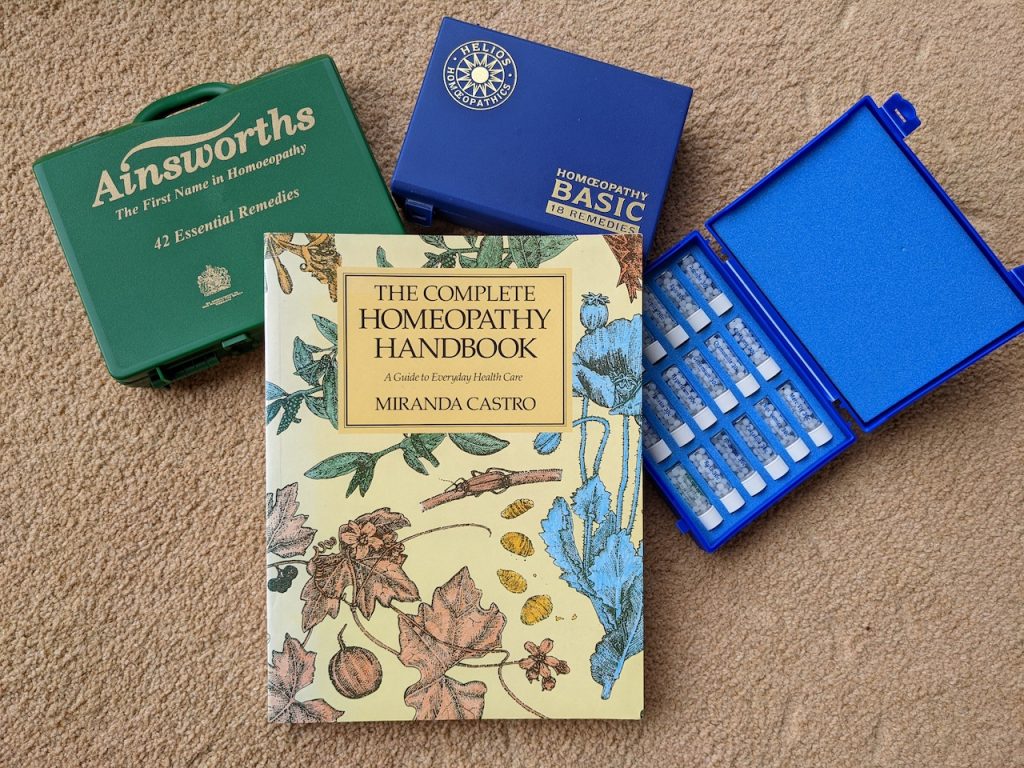
Let’s start 2025 by restating some basic principles. Homeopathy contrasts orthodox medicine in that it sees symptoms as the attempt of the body to reestablish harmony. What do I mean by harmony? Put simply when there is harmony – that is to say we are ‘well’ – no symptoms are apparent. Given the orchestration of trillions of cells in the human body, this is quite astonishing.
Marcus gives the example of the child who can run around all day, go to bed tired, wake up fully refreshed an run around the next day in the same manner. Boundless energy – that is a body in harmony with itself.
Sadly that state may diminish somewhat as we age, but nonetheless we go about our day pretty oblivious to our bodies and the complexities of its inner workings.
One of the most obvious signs of disharmony is pain. The orthodox approach is to manage these symptoms. The marketer’s – you surely notice – encourage us to seek out over the counter medicines like Paracetamol (Tylenol in the USA). Apparently some 35 tonnes per annum of Paracetamol is used per million of the population in the UK. Nice little earner!
Paracetamol is effective of course, but only at the level of suppression of symptoms. It is not curative. Much the same can be said of many prescribed drugs also.
In the end it is the body itself the does most of the healing.
This is where Homeopathy comes in. Homeopathic medicines are not drugs in the conventional sense, they are ultra dilutions and their purpose is to stimulate the innate healing potential that we all have.
Prescribing homeopathically is not quite as simple as picking up a box of Paracetamol. Nor can you say you take X for Y, though as Marcus’s book shows there are for first aid purposed typically four to six remedies that have particular affinity to each common complaint.
Prescribing homeopathically is governed by the law of similars, meaning that the symptom picture of the patient should match the ‘picture’ of the remedy.
A child (and it typically is a child) with a sudden high fever might be given Belladonna, because the Belladonna picture has high fever of a particular type. The characteristics of an Aconite or Gelsemium fever is different. Thus each remedy has its keynotes – and much of Marcus’s book is about keynote prescribing.
To help identify these keynotes he uses a nmenonic CLAMS.
Another approach is to draw a circle and divide it into four quadrants. Two quadrants are for aetiology (cause) and modalities as above, another is for affinity (= location) and the last covers symptoms (a combination of C and S in the CLAMS method).
Either way the aim is to get as full a picture as possible about what is going on.
Marcus has a top 10 remedy list – here are some example keynotes:
If you wish more guidance, or to explore the potential benefits of Homeopathic treatment, please book a discovery call via my website or mail me at [email protected] and I will respond by return
This blog continues the study on the use of Homeopathy in first aid; this time I consider Homeopathy for teeth pain.
As before I do recommend purchasing a first aid kit of basic homeopathic remedies. See my earlier blog Family Care with Homeopathy Without a kit to hand, you cannot do much on a weekend, other than take paracetamol.

This is a subject I have written about before. Having held onto a wisdom tooth with determination, I must now report that it finally met its demise last week.
Not ideal entertainment, but the experience usefully demonstrated the limitations and value of Homeopathy.
Homeopathy can help with toothache, but likely you will still need to consult your dental surgeon (to whom I was grateful for an emergency appointment), to find out the underlying cause.
Homeopathy cannot sort a failed tooth. But, it can help with pain and infection.
Toothache in my lower wisdom tooth responded well to homeopathic Silica some months ago. Back then the nerves jangled (and some) when touched by hot or cold fluids. It was still a viable if vulnerable tooth. Vulnerable because of a deep filling and some looseness.
Well it did well for some months, but last week pain returned. This time without any reaction to hot or cold.
This lack of reaction is a sure sign that the tooth is dead. Root canal treatment is one option, but – I learn – this process is less successful in wisdom molars. Especially an aged and vulnerable one. The pragmatic reality – alas – was extraction.
What follows is a short list of homeopathic medicines, commonly found in first aid kits, that can help with tooth infection and threatening abscess formation. In each case place one pilule in a tumbler or bottle of tepid water. Stir or shake and sip every 10 minutes. If there is no improvement in an hour, try the next on the list.
Infections with offensive breath, salivation and a dirty tongue. Worse at night and for both heat and cold.
Severely painful infections with potential abscess. Worse for cold drinks, eating, touching the tooth. Better for warm applications
Similar to Hepar.Sulp and try if there is no response to the Hepar.sulph.
If there is neuralgia – due to caries or micro-fractures – without a threatened infection or abscess, consider Belladonna (sudden onset; throbbing pain) or Coffea (excruciating pain with over excitement of the nervous system).
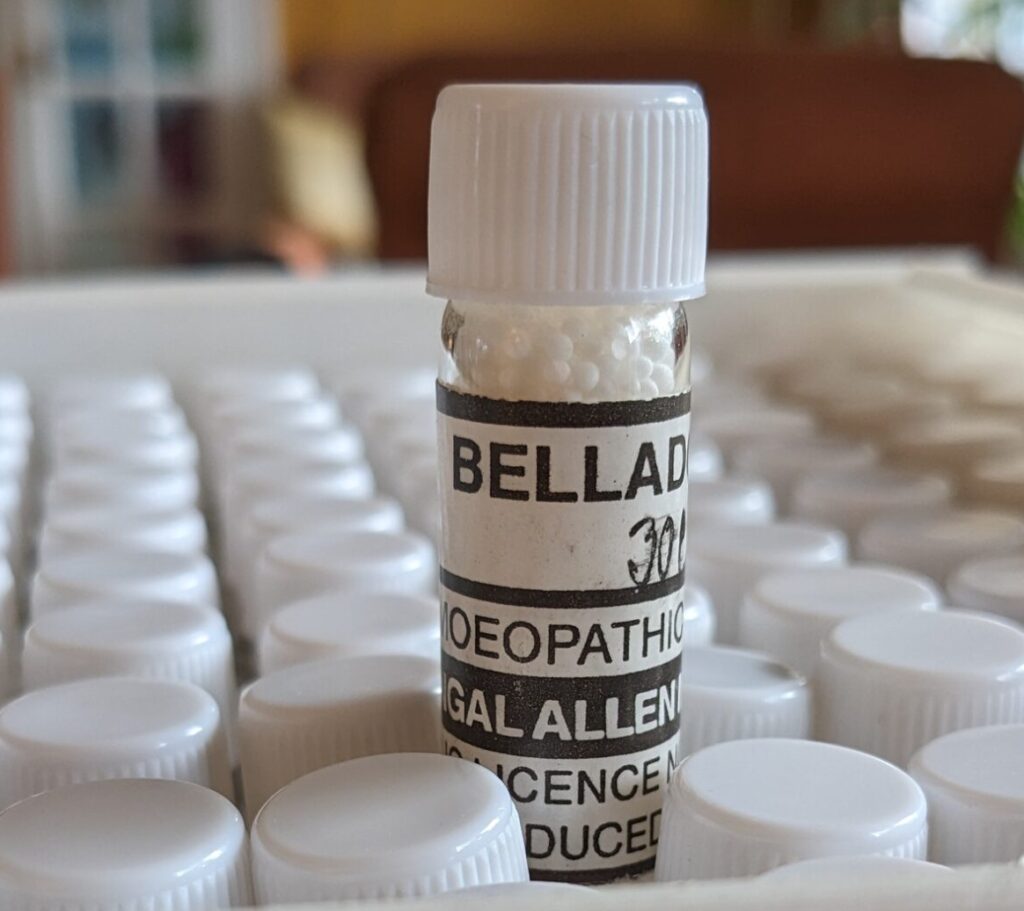
The most important remedy during teething, when the child is inconsolable, and very irritable (you give the toddler a toy and it is hurled away), is Chamomilla (German Chamomile). Again one pilule in a little water – stir, and give a teaspoon to the toddler every 10 minutes, until he/she calms down.
Extractions in particular are traumatic. The best remedy for shock is Aconite, so 2-4 doses at 10 minute intervals will reestablish equilibrium.
Thereafter the most beneficial medicine is Arnica, again one pilule in a tumbler or water bottle of tepid water, stir/shake and sip every 10-15 minutes for a couple of hours. Arnica promotes the healing of deep painful bruising.
Finally, once Arnica has done its work, put a pilule of Calendula in a tumbler of water or water bottle and take a sip 3-4 times a day for a couple of days. This remedy (origin the marigold flower) aids healing.
You dentist will ask you to rinse your mouth with salt water on a similar frequency. Do this also but 15 minutes apart from taking any homeopathic remedy.
I can vouch for both of these after my tooth was pulled last week!
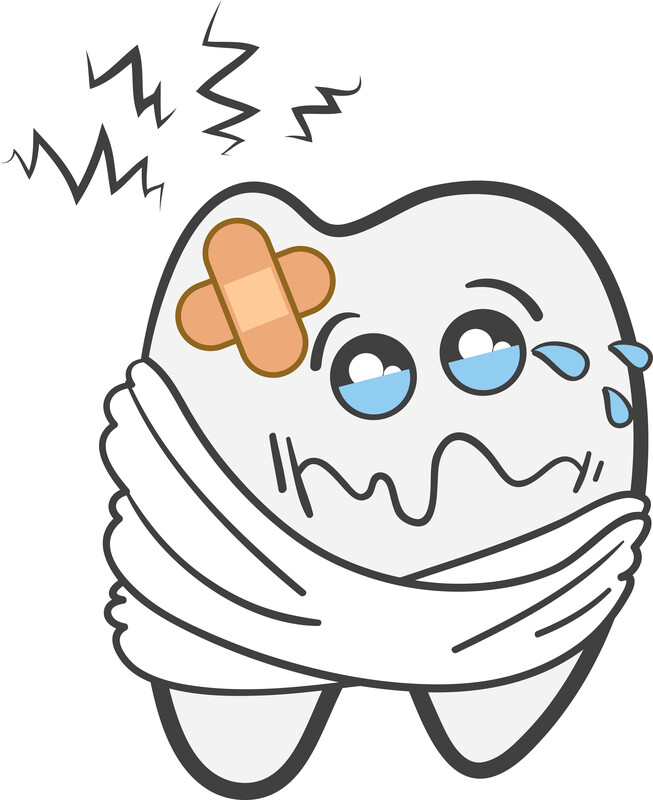
More on Homeopathy First Aid Kits. Whilst with care and attention accidents can be avoided, the unfortunate fact is that bumps and scapes are a fact of life, for adults and children alike. Please note that for many minor things the body will heal quite naturally, so use your medicines judiciously.
Within your first-aid kit you will find several in medicines in the class of ‘vulneraries’, these being suitable for the treatment of wounds to tissues (and feelings). For ‘vulneries’ think vulnerable (same word root).

Within your first-aid kit you will find several in medicines in the class of ‘vulneraries’, these being suitable for the treatment of wounds to tissues (and feelings). For ‘vulneries’ think vulnerable (same word root).
Looking at my Ainsworth Kit (see below), I find Apis; Arnica; Calendula; Cantharis; Chamomilla; Hypericum; Ignatia; Ledum; Rhus toxicodendron; Ruta graveolens; Staphysagria.
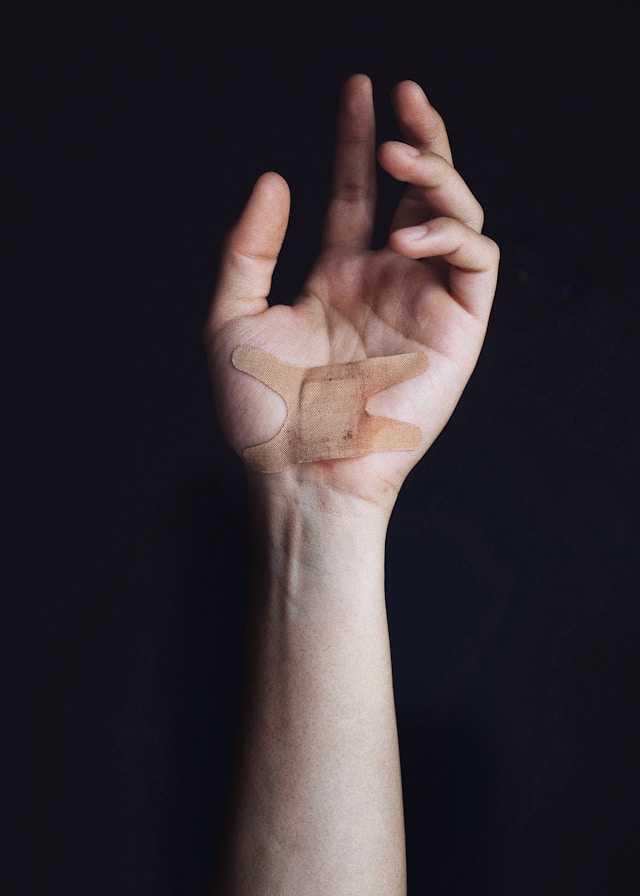
For more on the benefits of purchasing a first aid kit of basic homeopathic remedies see my earlier blog Family Care with Homeopathy
Classical homeopathic prescribing considers the following:
Consider homeopathic treatment like finding the right key for a lock, if after a taking the remedy for a short while (say one tablet or pill three to four times a day for 1-2 days) there is no response, then try another.
The task in classical homeopathic prescribing is to match the charateristics of the remedy or medicine with the symptoms of the patient. The symptoms reflect the body’s attempt to cure. The homeopathic remedy echoes those symptoms and stimulates an immune response. This is the principle of ‘like curing like’ (which is what the word Homeopathy means). Properly applied you will get better quicker.
Remember that homeopathic medicines are absorbed through the mucous membranes of the mouth – not the gut – so you let the tablet or pill dissolve under the tongue.
In Homeopathy First Aid Kits you will find several in medicines in the class of ‘vulneraries’, these being suitable for the treatment of wounds to tissues (and feelings).
Looking at my Ainsworth Kit, I find Apis; Arnica; Calendula; Cantharis; Chamomilla; Hypericum; Ignatia; Ledum; Rhus toxicodendron; Ruta graveolens; and Staphysagria.
Derived from the sting of the bee. Its affinity is for the skin, mucous (moist inner lining of organs) and serous (outer lining of organs) membranes. Red, puffy (oedema) and burning might be the key words. It is useful in rapidly developing conditions like tonsillitis, laryngitis, conjunctivitis and urinary troubles where there is a burning sensation. Think of apis also in rheumatism when the joint is shiny red and swollen. Ice cold applications ameliorate (e.g. suck ice with a sore throat).
Derived from a small mountain plant with yellow flowers. Many have heard of this medicine, possibly in its use as a herbal salve. Its primary use homeopathically is in the healing of soft tissue damage where there is bruising. Another odd characteristic is that people make light of their suffering: “don’t fuss, I am fine”. Arnica will benefit those unaccustomed to exercise who suffer from overuse of the muscles and joints. Arnica types do not like to be touched. It even has value in the treatment of influenza (particularly in athletes).
Don’t apply Arnica in herbal form to an open wound as a rash may develop (use Calendula instead – see below)
Here is a short video of the masterful Prof. George Vithoulkas talking about arnica. The video and sound quality are not great but the guidance is! Prof Vithoulkas is now 92 but still a leading light in homeopathy today. He teaches that this remedy should not be used for minor bruises, rather more serious events where there is real pain or even suspected concussion.
Curiously, the memory of past trauma can benefit from Arnica – possibly years past. I attended a lecture where Prof. Vithoulkas opened a patient’s case with Arnica because her health troubles began many years previously after she had been badly assaulted by a step-father.
Interesting fact: Arnica like Calendula and Chamomilla are all members of the daisy plant family (Compositae). The common daisy (Bellis Perrenis) has similar properties to Arnica though not usually in any first aid kit. Botanical families of plants often share common charactistics.
Derived from the Marigold. This is another substance that can be used externally as a herbal salve and internally in homeopathic potency. It promotes the healing of open wounds including ulcers. You could dissolve one pill from the kit in a little water and dab that on the wound and also take it internally. You can buy Calendula ointment, and also tincture (10% solution in alcohol / water) for external use. Think of Calendua when you might otherwise use Savlon or Germolene.
Derived from a small beetle (Lytta vesicatoria) otherwise know as Spanish Fly (though it is neither a fly nor unique to Spain!). The keyword here is burning pains. Consequently there is overlap with Apis. Its focus is on the genitourinary tract. Think of this remedy in cases of cystitis where there is a constant urge to urinate with burning. As you might expect it is useful first aid following scalds potentially with blistering. On the mental sphere there may be irritation to the point of rage.
Most people have heard of Chamomile tea and its soothing effect. Homeopathically it sits with a group of medicines that display suffering out of proportion to the condition. The chief characteristic is anger. The inconsolable and demanding teething baby – driving the parent also to despair – often responds well to Chamomilla. Everything is simply intolerable. A remedy to be considered for toothache, colic, ear infection and even pains of labour.
Derived from the plant St John’s Wort. Should you have the misfortune to jam your fingers in a door think of Hypericum. This is a medicine for lacerations where there is nerve damage. It can usefully be used alongside Calendula and indeed ointments containing both are useful in the first aid chest (sometimes called Hyper-cal). Painful damage to the coccyx will respond well to Hypericum. It can also be useful in the treatment of haemorrhoids (piles).
The wounds of Ignatia are primarily emotional. This is a remedy for emotional shock resulting from bereavement, disappointment or distress. Moods can swing from from one extreme to the other. There may be spasm and loss of self control. This remedy should aid a return to equilibrium. Unlike Chamomilla there is no anger or violence.
Derived from the wild rosemary (sage family) this medicine is used to wounds that often have a small point of entry. So useful in stings and bites or a stab from a nail (it has reputed anti-tetanus properties) or vaccinations. The books speak of the wounds being ‘cold’ or better from cold applications. This leads me to think that Apis is better for a bee sting (if hot and swollen), but I confess no personal experience in this. Try one and if no result try the other!
It is also beneficial should you receive a black eye (so compatible with Arnica).
It can be of benefit in rheumatism (which begins in the lower limbs and ascends), and gout. Inflammation of a ligament in the sole of foot (plantar fasciitis) can often respond to this remedy also.
Derived from a Poison Ivy found in the Asia and North America. Another ‘swords to ploughshare remedy’. This medicine is particularly useful in conditions where there is muscle, ligament and tendon damage. The key modality is worse on the first movement and improves with continued movement (also better from warmth). The Rhus tox patient is never comfortable for long and continually has to change position. It is a remedy that often follows Arnica to good effect.
It is worth saying that this medicine has many spheres of action. Contact with Poison ivy results in blisters and itching and consequently Rhus tox can be useful is such as Chicken pox or Shingles. Rhus tox can also help resolve a dry cough that is worse at night preventing sleep.
It is not really possible in Homeopathy to say what any medicine is ‘for’ as they often are ‘for’ many things – but there are affinities.
Derived from the herb Rue, this medicine sits close to Rhus tox. as it acts on the muscles, tendons, cartilage and joints. Like Rhus it is better for movement. It also has an affinity with eye strain (ocular muscles). The bruised sensation makes comparison with Arnica. Homeopathic chemists can supply Arnica, Rhus tox and Ruta in combination (ARR) given the overlapping characteristics. The first aid kits tend to have these medicines individually but it is perfectly possible to take them in alternation or sequentially.
Derived from a plant related to delphinium this is another remedy for wounds. This time clean incised wounds such as post surgery which are proving slow to heal. Recurrent styes may also be helped with this medicine. Equally the ‘wounds’ can be emotional often associated with a sense of victimisation.
Think of the above medicines in a self-help context to promote healing. If healing is slow it is worth giving me a call to see if one of the these remedies or another can help speed up the natural process.

Pulsatilla is a common remedy in Homeopathy. It is a useful remedy for young children in particular, but it is also a good remedy for a cough. But only if the picture fits.
Pulsatilla is a small plant from the buttercup family – an alpine – if you have a rockery it may be there, smiling at you!
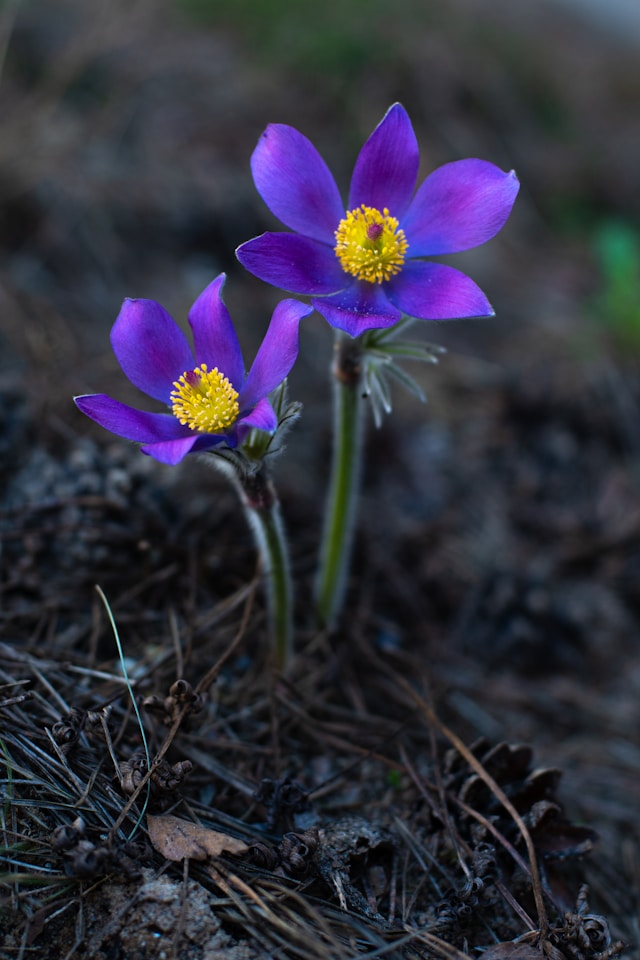
Continuing with the series on remedies in a typical home first aid kit, the plan was to talk in more general terms about kit remedies for common injuries, but I will leave that until next month.
Instead, courtesy of my adult son, I share a short example of how homeopathic prescribing differs from the orthodox medical approach.

For more on the benefits of purchasing a first aid kit of basic homeopathic remedies see my earlier blog Family Care with Homeopathy
Classical homeopathic prescribing considers the following:
Consider homeopathic treatment like finding the right key for a lock, if after a taking the remedy for a short while (say one tablet or pill three to four times a day for 1-2 days) there is no response, then try another.
The task in classical homeopathic prescribing is to match the charateristics of the remedy or medicine with the symptoms of the patient. The symptoms reflect the body’s attempt to cure. The homeopathic remedy echoes those symptoms and stimulates an immune response. This is the principle of ‘like curing like’ (which is what the word Homeopathy means). Properly applied you will get better quicker.
Remember that homeopathic medicines are absorbed through the mucous membranes of the mouth – not the gut – so you let the tablet or pill dissolve under the tongue.
My son lives up in the north-west. He recently married, then was off on a business trip abroad and he has raft (no pun) of duties at the local sailing club etc. In short he has had a bit on his plate.
Mum and dad had not been in touch for a few weeks until last weekend, when we learned he was under the weather with a bad cough and eye infection. He had been to the surgery and seen an associate GP who prescribed ointment for his eye. The cough would take its course, he was told.
He barked his way through the phone call, and assured me that there was no possible link between the eye and respiratory symptoms. In accordance with the rules of the animal kingdom, he likes to argue with his ‘old man’.
So what do we know from the five points list above? Lowered resistance due to fatigue is a likely cause. There is an upper respiratory infection, which gives a location. I failed to ascertain if anything made his cough better or worse – apparently it was the same regardless. But I did learn that the cough was loose in the morning (phlegm) and dry the rest of the day. His nose was sore also even though there was little discharge. And his appetite was low.
And what about that inflamed eye and sticky discharge? Was an eye inflammation and a simultaneous cough really a coincidence? I would argue that it was a nice example of a concomitant (item 5 of the list).
Seemed to me that the sum was worth more than the parts.
The kit pictured above contains 42 remedies and nearly all have the potential of a cough in their picture. Consequently, there is little hope of hitting the target unless this list is whittled down somethat.
So you need to think about the nature of the cough (dry, wet and so on). Also, the nature of the person, by which I mean what has changed. My son likes to argue with me – so that is not a change!
In homeopathy, there is an expression ‘strange, rare and peculiar’ as such things are often pointers to the necessary remedy / medicine.
There is one stand out remedy in the kit that has both a cough AND eye symptoms. That remedy in Homeopathy is Pulsatilla. A cough and coincident eye symptoms is peculiar!
There is an excellent book from Pharmacists Steven and Lee Kayne pictured below and available here. This uses flow charts to guide you to a remedy.
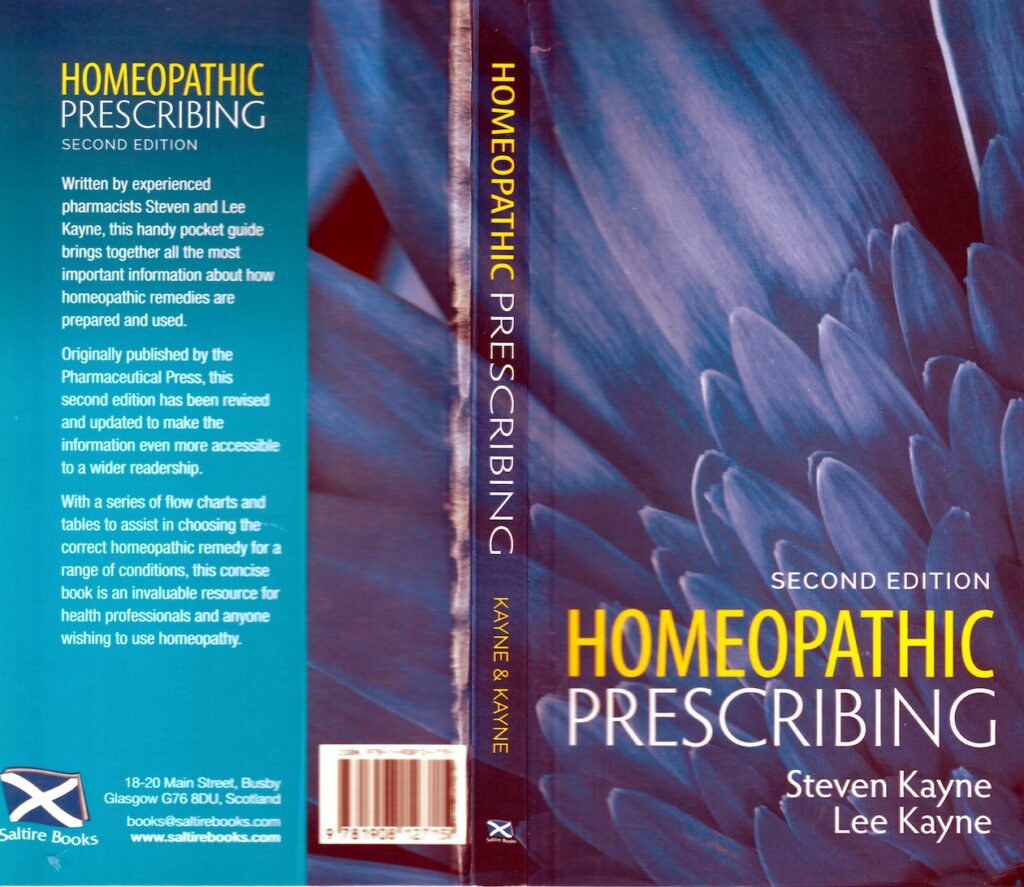
Let’s look at just two – one for cough and one for eye. Now rather than start at the top, go to the bottom and find Pulsatilla, then work up the chart in reverse. This gives you some idea of the relevance of Pulsatilla in Homeopathy and in this case.
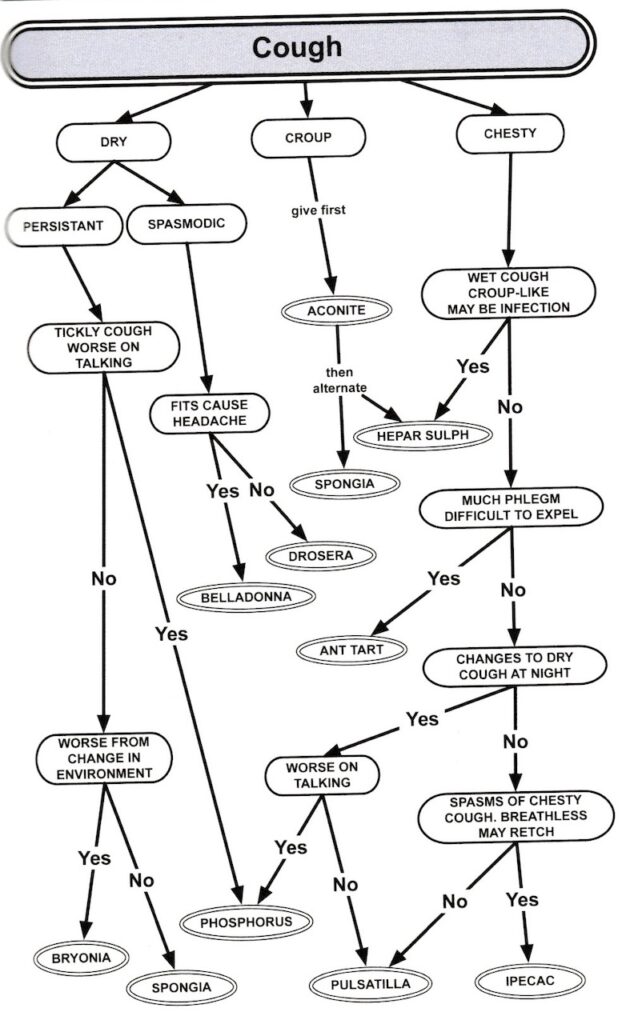
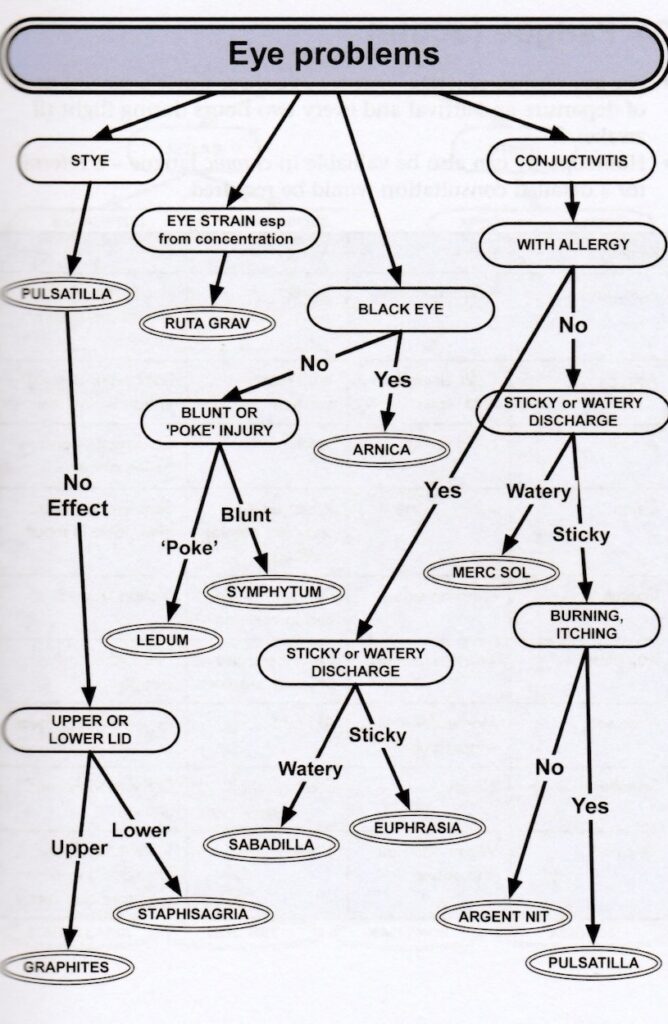
With a bit of arm twisting he took some – once he found his kit that languished at the back of a cupboard.
Of course I will be told, he was getting better anyway – which is true. But he’ll get better quicker.
By the way, with any respiratory infection you should consider taking high doses of vitamin C for a week or two. 3000 to 4000mg (3-4g) daily is reasonable. As a water soluble vitamin any excess leaves in the urine. Loose bowels mark the point of saturation – so reduce or stop should that occur.
Can Homeopathy help with the stress and anxiety of big events like examinations? Well, yes it can.
As we reach the summer solstice, I now realise that I should have written this blog a little earlier (sorry!) as the exam season is almost over. It will come around again.
In any case stressful events are always with us, so the topic of this blog extends well beyond the classroom.
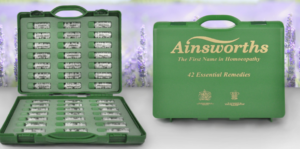
Continuing with the series on homeopathic remedies in a typical home first aid kit, in this blog I focus on kit remedies that have a particular affinity to exam stress.
For more on the benefits of purchasing a first aid kit of basic homeopathic remedies see my earlier blog Family Care with Homeopathy
Exam time is often marked with anxiety that can impact on performance. Anticipatory fears can cause both emotional and physical symptoms. Homeopathy offers remedies for stress and anxiety that are tailored to the needs (emotional and physical) of the student.
Classical homeopathic prescribing considers the following:
Consider homeopathic treatment like finding the right key for a lock, if after a taking the remedy for a short while (say one pill morning and night for 1-4 days) there is no response, then try another.
Remember that homeopathic medicines are absorbed through the mucous membranes of the mouth – not the gut – so you let the tablet or pill dissolve under the tongue.
A useful tactic on the day of the exam is to dissolve one pill in a water bottle (shake well) and sip during the course of the exam day.
The Aconite picture is always one of sudden onset. Consequently, Aconite is useful when the student has a panic attack that comes out of the blue, helping to stabilise the emotional upheaval quickly.
The keywords for Arg. Nit. are anticipation and uncertainty. Well, what else at exam time! It helps those who feel hurried and fearful of failure despite being well-prepared.
The Arsenicum picture is one of anxiety with restlessness and a compulsive concern for order. The student cannot settle and needs to check and recheck they have all the bits and bobs they need on the day.
It is by the way, the No1 remedy for sickness and diarrhoea after eating something that disagreed – so one to have with you on holiday.
Gelsemium is better known as an influenza remedy. The sufferer is weak, shaky and apathetic. A sort of paralysis results – a type of fear, that is characterised by ‘why bother’. There can also be diarrhoea from emotional excitement. It is a remedy for courage.
Here the keynote is lack of self-confidence and apprehension, although the student may outwardly show bravado. This student may over-prepare because they’re worried about their performance. Lycopodium is well known generally for gastric symptoms, especially bloating.
Although a homeopathic remedy in its own right, this is better known as a Schleussler tissue salt. It is a nerve nutrient, beneficial for students who are exhausted mentally from overstudying. It helps relieve feelings of stress and helps in restoring the brain’s energy levels.
While homeopathy is helpful in addressing exam stress and anxiety, don’t forget the basics. Maintaining a balanced lifestyle is key.
Fatigue exacerbates anxiety; 7-9 hours of quality sleep each night is crucial. Avoid late-night cram sessions and setting a consistent sleep schedule supports the body’s ability to manage stress.
Fuel the body and mind with ‘clean’ food. Eat nutrient-dense whole foods like vegetables, fruits, lean proteins, nuts and seeds. Staying hydrated and limit stimulants like caffeine. This also helps regulate anxiety levels.
Constant studying leads to burnout. Take short 10-15 minute breaks every 90 minutes to recharge. Get some fresh air, meditate, or go for a walk to clear the mind before diving back in.
I recently listened to a Medical Doctor who suggested this:
Put your right hand between the thumb and forefinger of your left hand. Then gently place your right thumb in the middle of your left palm, and your middle finger on the outside of the left hand. Now join the tips of your left thumb and left middle finger together.
Why not give it a try!
We have looked at some homeopathic remedies that can help with the sort of short term anxiety that it typical of exam time.
Howevere, Homeopathy also plays a crucial role in the treatment of deeper seated anxiety states. Here constitutional treatment, involving a deeper assessment of the individual’s overall health, temperament and symptoms. Whilst anti-depressant medications has its place, the homeopathic approach (which takes time – there is no magic bullet) should yield long term benefits and restore harmony.
If you have a deeper seated anxiety problem and wish to explore the homeopathic approach, please book a Free Discovery Call via my website.
I wrote about the Allium Cepa (the onion) Homeopathy back in 2021 from a slightly different angle. Here, as part of an ongoing series, I consider the remedy from a first aid perspective. The origin of the remedy is of course the common oinion. I am sure that you have chopped up some onions and so you know the effect.
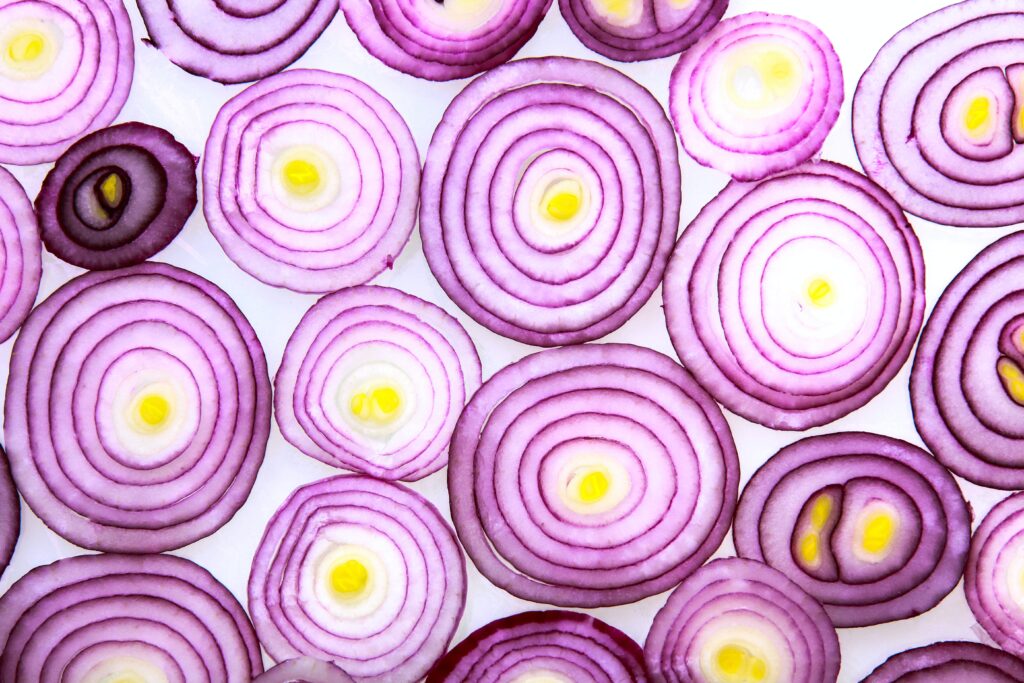
Classical homeopathy prescribing follows the natural law of similars.
This means that you select the remedy by matching its picture to the symptoms of the patient.
Every homeopathic remedy has both mental / emotional and physical characteristics.
The patient will not exhibit every characteristic of the remedy. Just capture the general theme.
Try to establish three out of the following four:
This remedy is of plant origin. It is, as I have said, the common onion.
This is a remedy for upper respiratory tract infections or allergies which primarily affect the eyes and nose, but can extend into the ears and throat. It is also a remedy of value in seasonal hay fever (Roger Morrison MD – Doctor / Homeopath in the USA – says it cures up to 30% of cases for a season, but permanent cure requires deeper acting remedies)
The patient may desire onions and – curiously – be averse to cucumber
Injudicious use of this remedy to suppress an inconvenient runny nose in the common cold risks driving the infection deeper (remember discharge is an aspect of the attempt of the body to cure). So use this remedy when the symptoms are more severe
Can homeopathy help with a cough? Yes it can. If you follow this blog you will know that Classical Homeopathy follows the ‘law of similars’. Simply put this means that the characteristics of the ailment and the remedy must match.

Unfortunately many homeopathic remedies have a cough ‘picture’. Fortunately, however, there is considerable overlap between the various remedies such that absolute precision is not required.
Coughs that fail to resolve warrant further investigation by your GP.
***
Continuing with the series on remedies in a typical home first aid kit, in this blog I am going to focus on kit remedies that have a particular affinity to coughs.

Classical homeopathic prescribing for acute complaints considers the following:
Put another way, items 2,4,5 on this list are your main symptoms.
So let’s have a look.
This is a dry cough. The characteristic of this remedy is sudden onset. There may be fever or chilliness with shivering. The symptoms are worse around midnight. The cough is hoarse and dry. The patient is thirsty. This is a remedy for the first 24 hours only. If the cough continues then change to another of the remedies below.
This is a wet cough. Breathing is difficult because of the phlegm (which is white) and so there is rattling in the chest. Worse in warm stuffy rooms and at night. Better sitting up. A remedy for the very young and elderly. Thirsty for cold drinks
This is a dry asthmatic type of cough with wheezing. There may be a sense of constriction, tightness and / or burning though you may feel chilly (so better in the warmth). There is great restlessness. The symptoms are worse around midnight. Warm drinks help and taken regularly is small sips (rather an Arsenicum keynote)
This is a dry, hard cough. The onset is slow (not like Aconite). Because everything is sore you do not want to move – this is a key characteristic. You are irritable and want to be left alone. Generally better for pressure and long drinks (very thirsty).
This is a dry cough that comes in spasms – you can hardly catch your breath. Consequently the stomach muscles may be painful. The cough is worse when lying down making sleep difficult. Better for slow movement in the open air.
This is a wet cough with thick yellow mucus (infection) – often dry at night and loose in the morning. But it is also useful in croup which has a dry cough. You will be chilly and want to be wrapped up. Worse at night in bed.
Totally dry cough – tickling and comes in paroxysms with choking or gagging, with wretching / vomiting. Worse in the evening and in a warm room and better with warm drinks. The nose may bleed.
Dry teasing cough with soreness in chest. Throat raw. Spasmodic with wretching. Feverish – colds go to chest. Irritable and impatient. Better with warmth. Better in the evening but then worse after midnight.
Violent dry cough with irritation in throat, but lungs congested. Laryngitis. Seeks comfort and sympathy. Nervous temperament. Cold drinks may be vomited.
Changeable cough – loose in the morning, dry during the day and then loose in the evening. Thick yellow mucous. Craves attention and sympathy. Better in open air.
Bronchial catarrh with wheezing. Sound like a saw going through board. Alternate with Hepar Sulph in Croup.
India is perhaps the most notable country for the wide practice of Homeopathy. There are pathways for medical students to study both western medicine and homeopathy as well as other traditional forms such as Ayurvedic medicine.
Dr Saptarshi Banerjea in Calcutta (Kolkata) recently posted a video on the subject of coughs and remedy selection. Quite entertaining (unless you have the cough in question!)
Not everyone has the skills of Dr Banerjea, but nonetheless, homeopathy can help shorten the duration of any cough resulting from respiratory infection.
This short article considers first aid with homeopathic ‘Aconite Napellus’, usually just known as the remedy ‘Aconite’. This is a remedy commonly found in homeopathic first aid kits available from pharmacies such as Ainsworths and Helios
Please read my initial article in this series, if you have not already done so
Classical homeopathy prescribing follows the natural law of similars. Which means that you select the remedy by matching its picture to the symptoms of the patient.
Every homeopathic remedy has both mental / emotional and physical characteristics. Remember that the patient will not exhibit every characteristic of the remedy. Just capture the general theme.
Try to establish three out of the following four:
****
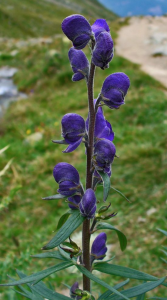
This remedy is of plant origin. Its common name is Monkshood, in recognition of the shape of its flowers which resemble a monk’s hood. It is a poisonous neurotoxic plant, but a very useful remedy for acute conditions when potentised homeopathically.
the early stages (the first 24h) of feverish illnesses when the patient may be anxious though fear may not be present.
It is also a remedy for someone who had had a sudden shock or fright (e.g. accident or heart attack or stoke).
Main remedy in the early stages of croup and also sudden fever – but just in the first 24h and then look to other remedies (which will be described as the series progresses)
You can care for your family with some basic homeopathy and a homeopathic first aid kit.
Starting mid month I am going to share with you the key characteristics of the homeopathic remedies typically found in a first aid kit.
Some homeopathic pharmacies sell first aid kits. In the photo you will see two of the best known.
Taken in alphabetic order, the first remedy will be Aconite and the last Sulphur.

To introduce this series I wish to share the words of the late Dr R A F Jack who was a NHS GP working near Bromsgrove until his retirement in 1980.
With the advent of the NHS, his practice grew. To help limit the number if night calls, he gave every family with young children four bottles of homeopathic remedies for emergencies (Aconite; Belladonna; Ipecacuanha; Chamomilla). In time this very basic kit expanded to 22 remedies.
Below, is his introductory guidance: the words are taken from his book Homeopathy in General Practice (Beaconsfield Publishers 2001 – still available).
“ I would tell the mother that there were five remarkable features about these remedies:
“In deciding which fever pills to use in a doubtful case, I used the analogy of a bunch of keys. If the first key does not fit the lock, it has harmed neither the key nor the lock, and the next key will probably work….”
*(This, incidentally has happened several times. I would tell of one occasion when a child fed all four bottles into a goldfish tank, but a week later the fish were none the worse and continued to swim about unperturbed.)
In a society used to biochemical medicine, that is to say what you get from your local chemist (prescribed or over the counter), the concept of the infinitesimal doses is a challenge.
You need to think in terms of physics and not chemistry.
Consider the homeopathic remedy as a frequency or pattern. Poetically put, music for the soul.
It is a bit like a software download.
The function of a homeopathic remedy is to stimulate an immune response to overcome the condition causing a problem.
This contrasts most orthodox medicines that interact chemically to kill bacteria or ease symptoms by suppressing the natural immune response (e.g. steroid creams for skin complaints).
Homeopathic remedies are made by a serial process of dilution and agitation (otherwise known as succussion).
By way of example, if the leaves of the stinging nettle are crushed and filtered in a mixture of alcohol and water, you have a herbal remedy. One drop of this in 99 drops of alcohol water yields the first centesimal potency labeled 1C. One drop of the 1C potency in another 99 drops of alcohol water yields the second centesimal potency or 2C and so on.
Homeopathic remedies found in the kits shown in the photograph are 30C potency. The lower 12C and 6C potencies are also suitable for first aid use.
Homeopathic medicines are initially made as liquids (termed ‘medicating potencies’) which are then dropped onto pills or tablets. These are more conventient to carry around.
Typically, first aid kits have 2g bottles containing round sugar pills.
The usual dose is one pill or tablet.
For infants, you can crush a pill or tablet between a folded piece of paper to make a powder. Or, you can buy the remedy as sugar granules which comes to the same thing (dose say a quarter teaspoon).
Another trick is to dissolve a pill in a little water (stir well) and give a teaspoon.
Dose
You can safely give 30C and lower potencies three or four times a day over a few days. In an urgent give every 15 minutes over an hour or two.
Some principles:
Do not take Homeopathic remedies over an extended timeframe without professional advice. This would not be first aid. Similarly only give a remedy every hour or less for over 1-3 hours and then tail off.
Expect to see some improvement in 24 hours and conclude treatment within 5-7 days.
Politics, I am afraid, much has changed since Dr Jack’s time. There has long been tension between different schools of thought. Dr Jack clearly found value in homeopathy as did the many doctors he taught.
However, the NHS is wedded to an orthodox western scientific model (which rightly has its place) otherwise known as Allopathy. Medical schools teach this model to the exclusion of alternatives.
In an earlier blog you can read about the difference between the Allopathic and Homeopathic approach
Consequently, knowledge of the homeopathic approach has diminished within orthodox Medicine although the Faculty of Homeopathy still exists for Doctors and Nurses. The Society of Homeopaths and Alliance of Registered Homeopaths are two lay bodies that champion Homeopathy in addition.
Other countries see things differently, especially India.